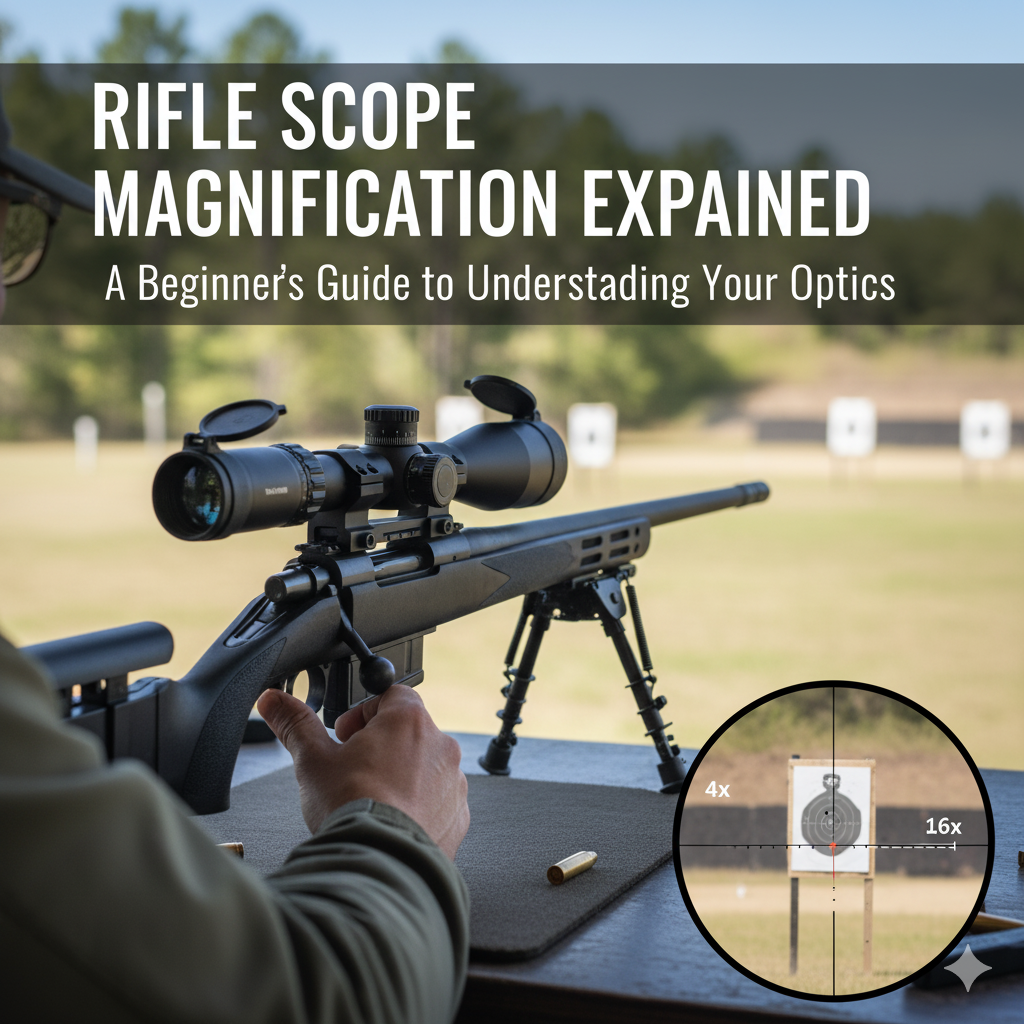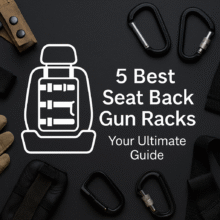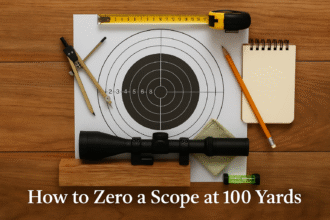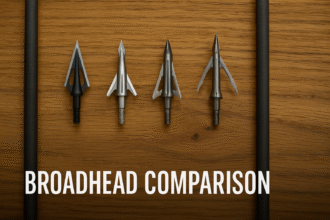Rifle Scope Magnification Explained for Beginners

If you’re new to hunting or target shooting, choosing the right rifle scope can feel confusing especially when it comes to magnification. What does “3-9×40” really mean? How much magnification do you need for 100 yards, 300 yards, or even 1,000 yards? And what’s the difference between fixed and variable scopes?
In this beginner-friendly guide, we’ll break down everything you need to know about rifle scope magnification, so you can confidently pick a scope that matches your shooting style, target distance, and environment.
Table of Contents
- 🎯 What Is Rifle Scope Magnification?
- 🔢 Understanding Scope Numbers: “3-9×40” Explained
- ⚙️ Fixed vs Variable Magnification Scopes
- 📏 Choosing the Right Magnification by Shooting Distance
- 👁️ Field of View (FOV) and Why It Matters
- 🌅 The Role of the Objective Lens Size
- 🧠 Understanding Exit Pupil and Eye Relief
- 🎯 First Focal Plane (FFP) vs Second Focal Plane (SFP)
- 🪶 The Impact of Magnification on Weight and Handling
- 🪞How to Adjust Magnification Properly
- 🧭 Magnification and Parallax: The Hidden Factor
- 🧩 Balancing Magnification with Purpose
- 🧰 Bonus: Other Factors to Consider When Buying a Scope
- 🪶 Common Beginner Mistakes with Magnification
- 🧍♂️ Recommended Magnification for Beginners
- 🏁 Conclusion: Finding Your Perfect Scope Magnification
🎯 What Is Rifle Scope Magnification?
Magnification refers to how many times closer your target appears through the scope compared to what you’d see with the naked eye.
For example:
- A 3× magnification makes the target appear three times closer.
- A 9× magnification makes it appear nine times closer.
If you’re viewing a deer at 300 yards through a 3× scope, it will look like it’s only 100 yards away to your eye.
Magnification helps you see your target more clearly, but higher isn’t always better. The right power depends on distance, lighting, and shooting purpose.
🔢 Understanding Scope Numbers: “3-9×40” Explained
You’ve probably seen scope labels like 3-9×40 or 4-12×50. Let’s decode that.
| Example | Meaning |
|---|---|
| 3-9×40 | The scope has a variable magnification from 3× to 9×, and an objective lens diameter of 40mm. |
| 4×32 | A fixed magnification of 4×, with a 32mm objective lens. |
| 6-24×50 | A variable magnification from 6× up to 24×, with a 50mm objective lens for brighter image quality. |
Breakdown:
- First number (3-9) = magnification range (zoom power).
- Second number (40) = diameter of the front (objective) lens, which affects light transmission and brightness.
So a 3-9×40 scope can zoom from 3× to 9×, and its 40mm lens helps gather enough light for clear, bright images—perfect for medium-range shooting.
⚙️ Fixed vs Variable Magnification Scopes
There are two main types of scopes when it comes to magnification:
1. Fixed Power Scopes
- Example: 4×32
- The magnification stays constant (4× in this case).
- Simpler, lighter, and often more durable because fewer moving parts.
- Great for beginners or hunters who shoot at a consistent distance.
Pros:
- Less expensive
- Easy to use
- Reliable and shock-resistant
Cons:
- Not flexible for varying shooting distances
2. Variable Power Scopes
- Example: 3-9×40 or 4-16×50
- Allows you to adjust magnification for different distances and targets.
Pros:
- Versatile for both close and long ranges
- Ideal for hunting, competitions, and tactical use
Cons:
- Slightly heavier and costlier
- More internal mechanics (potential for alignment drift over time)
If you’re a beginner, a variable scope like 3-9×40 is a great all-rounder it offers enough range flexibility for most hunting and range scenarios.
📏 Choosing the Right Magnification by Shooting Distance
One of the biggest beginner mistakes is over-magnification. You don’t need 25× zoom for deer hunting at 100 yards! Here’s a general guide:
| Shooting Distance | Recommended Magnification | Ideal Usage |
|---|---|---|
| 0–100 yards | 1× to 4× | Close-range hunting, home defense, tactical shooting |
| 100–300 yards | 4× to 9× | Most hunting (deer, boar, coyote), mid-range targets |
| 300–600 yards | 9× to 12× | Long-range target shooting, varmint hunting |
| 600–1000+ yards | 12× to 25× | Extreme long-range precision, competition shooting |
Example Scenarios:
- Whitetail deer hunting (100–250 yards): 3-9× or 4-12× is perfect.
- Coyote or varmint hunting (300–600 yards): 6-18× or higher helps you spot smaller targets.
- Benchrest or long-range competition (800+ yards): 16-25× or more gives fine precision for small bullseyes.
Remember: higher magnification reduces your field of view, which can make it harder to track moving targets quickly.
👁️ Field of View (FOV) and Why It Matters
Field of View (FOV) means how wide an area you can see through the scope, usually measured in feet at 100 yards.
- Lower magnification = Wider FOV
- Higher magnification = Narrower FOV
For example:
- At 3×, you might see 30 feet of width at 100 yards.
- At 9×, you might only see 12 feet of width.
This trade-off means you should use lower power for scanning or tracking moving targets, and higher power for precise aiming on stationary ones.
🌅 The Role of the Objective Lens Size
The second number in a scope (like the 40 in 3-9×40) indicates objective lens diameter in millimeters.
Larger lenses (e.g., 50mm):
- Gather more light
- Brighter image in low-light (dawn/dusk)
- Allow higher magnification clarity
Smaller lenses (e.g., 32mm):
- Lighter, more compact
- Less light-gathering capability
If you hunt in low-light conditions, choose a larger objective lens (44–50mm).
For daytime range shooting, 40mm or smaller is usually fine.
🧠 Understanding Exit Pupil and Eye Relief
Two terms you’ll often see in scope specs are exit pupil and eye relief.
🔸 Exit Pupil
It’s the diameter of the beam of light exiting the eyepiece, calculated as:
Objective Lens ÷ Magnification
For example:
A 3-9×40 scope at 3× gives:
40 ÷ 3 = 13.3mm exit pupil (bright image)
At 9×:
40 ÷ 9 = 4.4mm exit pupil (dimmer image)
Human pupils dilate to about 7mm in darkness—so a larger exit pupil = brighter view, especially in low light.
🔸 Eye Relief
This is the distance your eye must be from the scope to see a full image.
- 3–4 inches of eye relief is ideal for most rifles.
- Too short, and you risk a “scope bite” from recoil.
- Too long, and you’ll struggle to get a clear sight picture.
Always choose a scope with generous, consistent eye relief for comfort and safety.
🎯 First Focal Plane (FFP) vs Second Focal Plane (SFP)
Modern scopes come in two optical designs depending on where the reticle (crosshair) is placed:
1. First Focal Plane (FFP)
- Reticle zooms in and out with magnification.
- Holds true across all power levels perfect for long-range shooters using holdovers.
- More expensive but very precise.
2. Second Focal Plane (SFP)
- Reticle stays the same size regardless of magnification.
- Easier for beginners and hunters who shoot at a set distance.
If you’re just starting out, an SFP scope is usually simpler and more affordable.
🪶 The Impact of Magnification on Weight and Handling
Higher-powered scopes tend to:
- Weigh more
- Be longer
- Require higher mounting rings
- Affect rifle balance
For hunters who walk long distances, lighter 3-9× scopes are ideal.
Precision or competition shooters may prefer heavier 6-24× optics with better adjustment controls.
🪞How to Adjust Magnification Properly
On variable scopes, the power ring near the eyepiece controls magnification.
Here’s how to use it effectively:
- Start at the lowest power to locate your target quickly.
- Zoom in gradually once your crosshairs are centered.
- Avoid max zoom unless absolutely necessary—small hand movements become exaggerated, and image brightness may drop.
Tip: If your target looks shaky at high zoom, reduce magnification slightly it often improves overall visibility and steadiness.
At higher magnification levels, parallax error can cause your reticle to shift off the target even if your head moves slightly.
What Is Parallax?
Parallax occurs when the reticle and target image aren’t on the same optical plane.
How to Fix It
- Many mid-to-high-end scopes include a side parallax knob or adjustable objective (AO) to fine-tune focus for different distances (usually marked 50yds, 100yds, 300yds, ∞).
- Adjust until the reticle stays fixed on target even if you move your head slightly.
For beginners shooting under 300 yards, a factory-set parallax (100 yards) scope is usually fine.
🧩 Balancing Magnification with Purpose
When picking your scope, think of these three questions:
- What distance will I shoot most often?
- What size are my targets?
- Do I prioritize speed, accuracy, or light gathering?
Here’s a quick summary:
| Type of Shooting | Typical Range | Recommended Scope |
|---|---|---|
| Deer / Hog Hunting | 50–300 yards | 3-9×40 or 4-12×44 |
| Varmint / Predator | 200–600 yards | 6-18×44 or 6-24×50 |
| Target / Benchrest | 500–1000 yards | 10-25×50 or higher |
| Tactical / 3-Gun | 0–200 yards | 1-6×24 or 1-8×30 |
| Brush / Woods Hunting | <100 yards | 1-4×24 or 2-7×32 |
🧰 Bonus: Other Factors to Consider When Buying a Scope
Magnification is just one piece of the puzzle.
Also consider:
1. Lens Coating
Look for fully multi-coated optics to reduce glare and increase brightness.
2. Tube Diameter
Most scopes are either 1-inch or 30mm.
- 30mm tubes offer greater adjustment range and light transmission but require heavier mounts.
3. Reticle Type
Choose reticles based on your goal:
- Duplex: Simple and clean for hunting
- BDC (Bullet Drop Compensator): Great for long-range holdovers
- Mil-Dot: Ideal for tactical and range estimation
4. Durability
Ensure it’s waterproof, fog-proof, and shock-resistant, especially for outdoor use.
5. Brand Reputation
Trusted brands include Vortex, Leupold, Bushnell, Nikon, Burris, and Primary Arms—each offering great entry-level scopes for beginners.
🪶 Common Beginner Mistakes with Magnification
- Over-zooming: Using 20× when 6× is enough—makes your view darker and shakier.
- Neglecting eye relief: Causes scope bite from recoil.
- Buying the biggest scope available: Adds unnecessary weight and cost.
- Ignoring mounting height: Large objective lenses may require higher rings, altering cheek weld.
- Forgetting lighting conditions: High magnification in dusk conditions = dim sight picture.
Remember: a clear, stable image at lower power beats a shaky, dim one at high power.
🧍♂️ Recommended Magnification for Beginners
If you’re starting out, here are tried-and-true configurations:
- 3-9×40 → Classic all-rounder for hunting and target shooting.
- 4-12×44 → Slightly more reach for longer shots.
- 1-6×24 → Perfect for tactical or short-range rifles.
- 6-24×50 → For serious long-range or precision shooters.
🏁 Conclusion: Finding Your Perfect Scope Magnification
Rifle scope magnification doesn’t have to be intimidating. The key is to match your magnification range to your target distance and shooting environment—not just to pick the highest numbers.
For most beginners, a 3-9×40 scope is the sweet spot: bright, versatile, affordable, and simple to use. As you gain experience and specialize in certain shooting styles, you can move up to higher magnifications with advanced features like parallax adjustment and FFP reticles.
Whether you’re tracking deer in thick woods or punching paper targets at 500 yards, understanding magnification helps you shoot smarter, safer, and more accurately.






